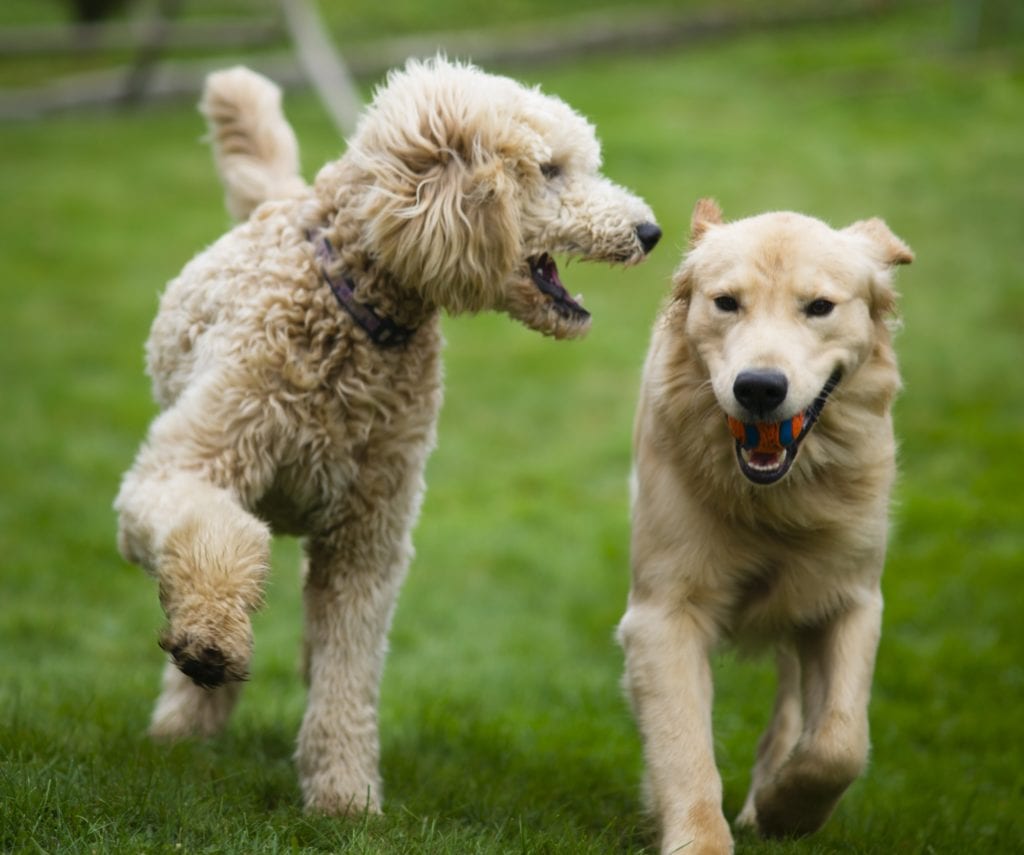Many people grapple with the idea of bringing a new dog into the household but they’re just not sure if or how they should. We’re not going to sugar coat it: bringing home a new pet IS a big deal and it SHOULD be heavily considered, especially when you already have animals in the household. The good news is it’s totally doable and usually ends up being a wonderful addition to everyone’s lives; you and your pets have another playmate to love! But, before you rush to the shelter for the newest addition, here are 5 tips for bringing a new buddy into the brood.
- Gauge Your Current Company. Does your dog growl at other dogs when you’re on a walk together? Does your cat arch its back if it sees another feline through the window? If your current pet seems a bit antisocial, it may not enrich their lives to share their space or their affection. If, however, you’ve seen them play with other animals (even if they don’t always engage) then you have a chance they’ll come around to the right playmate.
- Consider Important Similarities. You don’t have to bring home a pet of the same breed, age, or even species, but you do need to consider things like play style, energy levels, and overall demeanor. If you have a sweet, submissive dog you certainly don’t want to introduce a domineering, rough-and-tumble companion to their space.
- Get to Know the New Buddy. Visit more than once and talk with the shelter about the potential pup and their quirks; do they get along with other dogs and children? Are they territorial over food or toys? You can never be too thorough when it comes to introducing a new member of the family.
- Do a Meet and Greet. We consider this non-negotiable. Try to coordinate a meet and greet with the shelter either off-site or on the premises if your current dog will do okay. Understand that this is a trial run, everyone’s energy is going to be a little unsure and on edge, but you should be able to get an idea of whether or not the two will get along once the newness wears off.
- Â Go Slowly and Be Proactive. Some people find that a slow introduction, usually with your current pet in a crate or caged off area, is best so that the new animal can familiarize themselves with their new home, while others find it fuels anxiety and territorial feelings from existing pets. Many people think an off-leash introduction on neutral territory allows for free play and for existing pets’ guards to come down. The trick is to keep your existing pet in mind and be there for both animals. Stay nearby and correct any unacceptable behavior. The most important thing to remember is that you are the pack leader and your energy and commands will dictate the tone of the introduction.
And, of course, be patient and honest with yourself. If it’s simply not going to work, allow that to be the conclusion and keep your eyes peeled for another buddy. If there are small things to work through, diligently work through them for the sake of enhancing your current pet’s life with a companion. If you have a trick or story from when you brought a new pet home, we’d love to hear more about it on Twitter!

